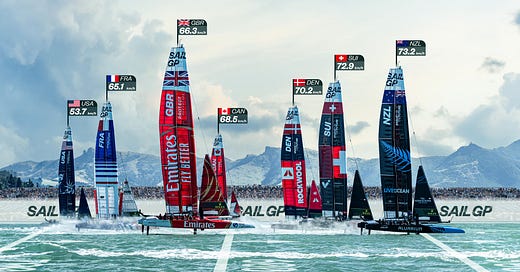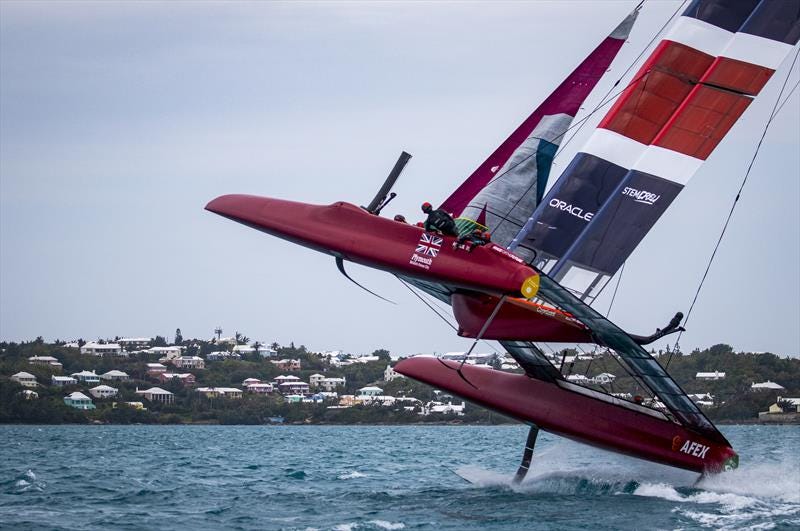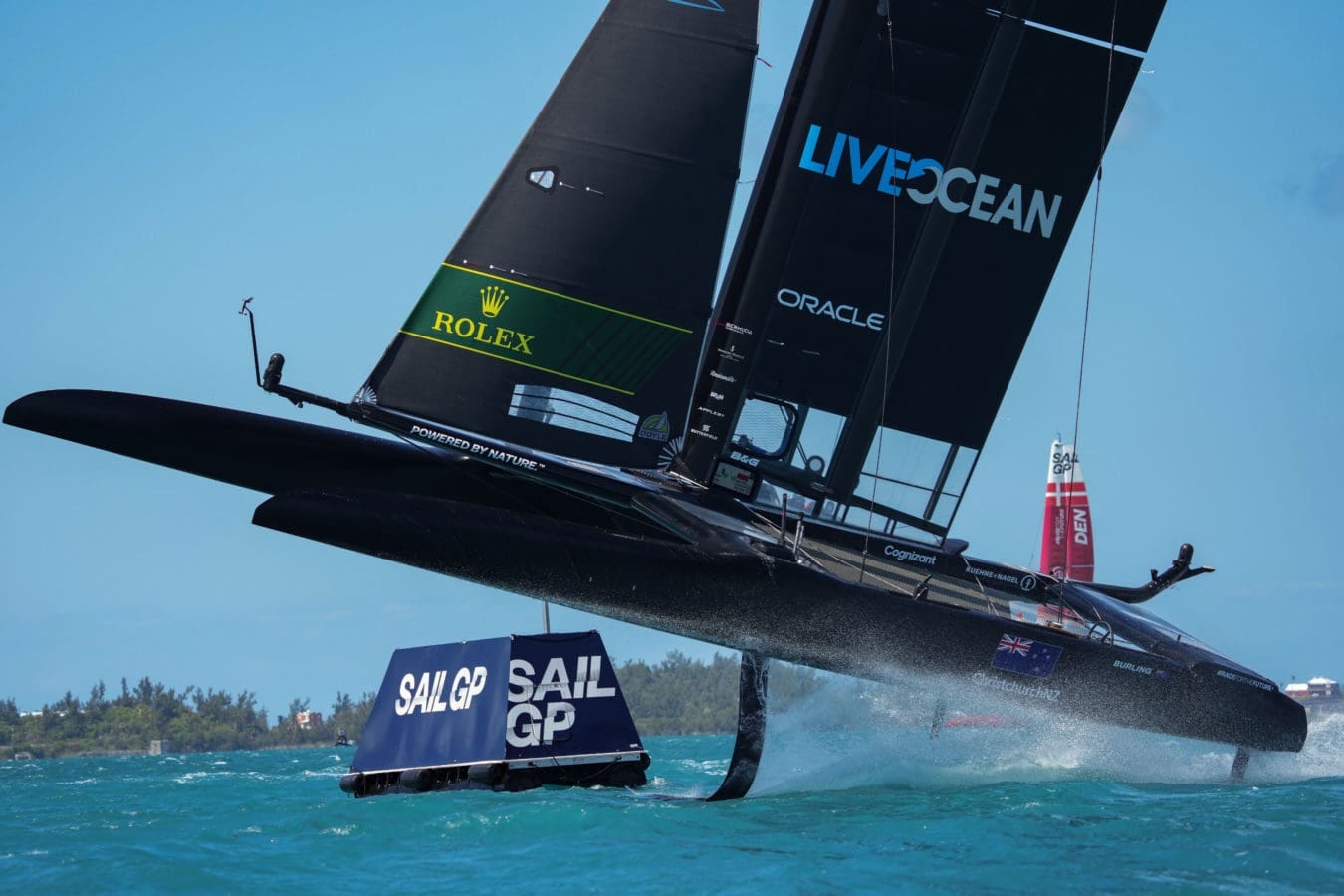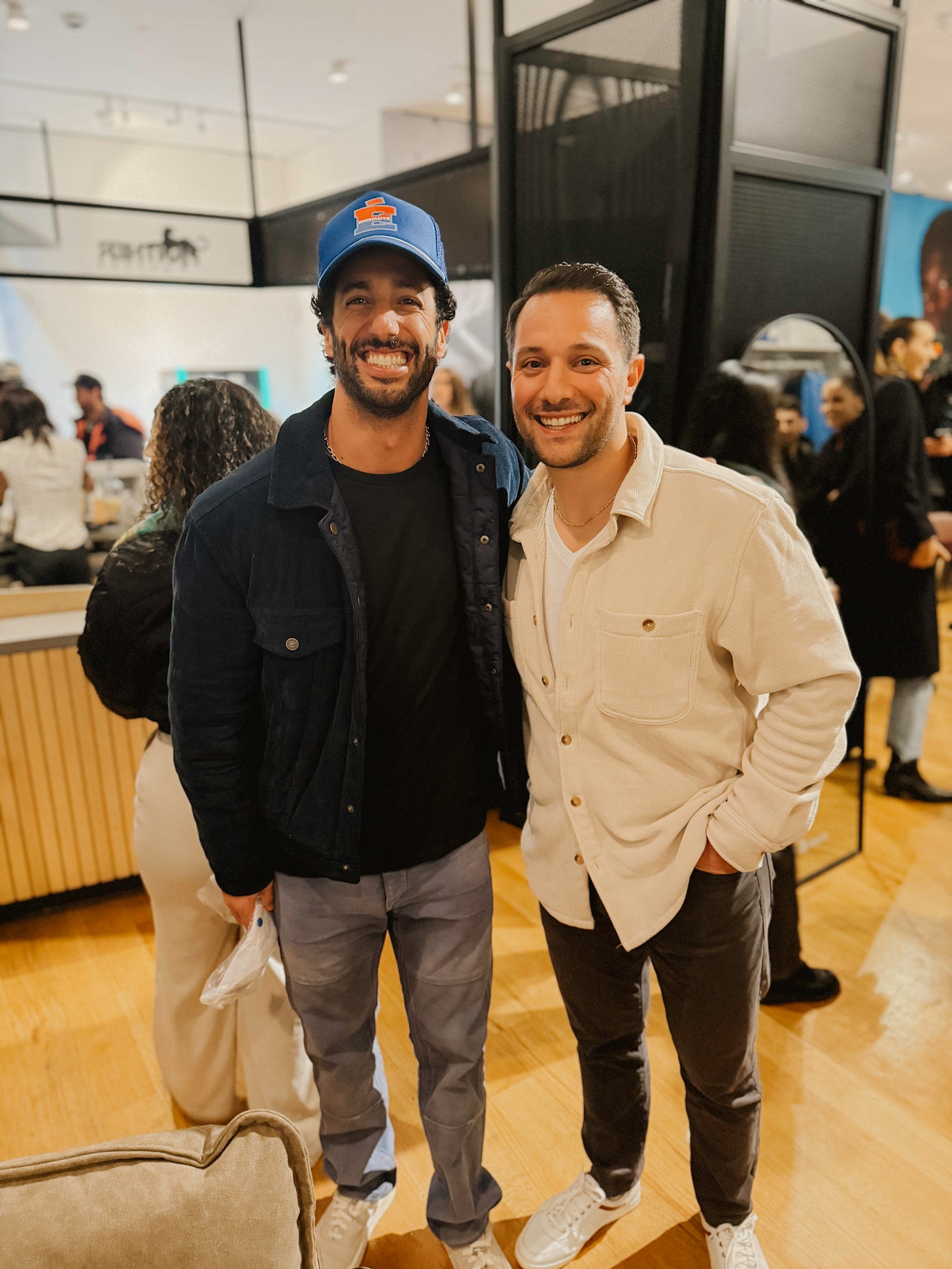Welcome to a FREE edition of Business of Speed.
In case you missed it:
If someone forwarded you this email, consider supporting independent coverage and analysis of the business of Formula 1.
The irony isn't lost on anyone at SailGP headquarters: the world's oldest mode of powered transportation is desperately trying to prove its relevance in the age of TikTok.
The league's latest coups suggest a sea change in sailing's commercial appeal. A broadcast extension with CBS Sports will deliver 54 hours of coverage across CBS platforms for the 2025 season—the largest American television deal in the sport's history.
The F50 catamaran, more spacecraft than a sailboat, barely touches the water as it hydrofoils above the surface. Its crew of elite athletes performs a carefully choreographed dance of technical precision.
The spectators - yes, spectators at a sailing event - gasp collectively as the boat executes a high-speed turn that would have been impossible just a decade ago. This is SailGP, and it's either sailing's salvation or its surrender to the altar of modern sports entertainment, depending on whom you ask.
The old guard of sailing tends to speak about spectators the way aristocrats once spoke about the nouveau riche - with a mixture of necessity and mild distaste. But Russell Coutts, the decorated sailor turned CEO of SailGP, has the air of someone who's seen enough beautiful sunsets to know they don't pay the bills. "To have longevity, the sport's got to be more conscious about marketing itself better and being more fan-friendly."
The statement hangs in the air like a challenge to the sport's old guard, who've long treated commerce as something that happens to other people.
The Numbers Game
The statistics suggest Coutts might be onto something. In its fourth season, SailGP has seen its viewership surge to 193 million across 12 races—a 48% increase from the previous season. This season, the Spain Sail Grand Prix drew 1.78 million U.S. viewers, the largest sailing audience in America since the heyday of the America's Cup in the early 1990s. For context, that's roughly the same number of people who watch a mid-season NBA game, a comparison that would have seemed laughable just five years ago.
But raw viewership tells only part of the story. The fundamental transformation lies in how SailGP has fundamentally reimagined the relationship between sailing and its audience. Gone are the days when following a sailing race meant squinting at distant specks on the horizon.
Today's SailGP events are staged in stadium-style venues, where more than 200,000 in-person spectators have witnessed these technological marvels up close this season. The New Zealand Grand Prix alone drew 22,000 fans, numbers that would have once seemed fantasy in traditional sailing competitions.
Technology as Democracy
At the heart of this transformation is a technological arms race that paradoxically aims to eliminate it. Each F50 catamaran carries 125 sensors that generate 1.15 billion data requests hourly—a volume of information that would make a Silicon Valley startup blush.
However, unlike Formula 1, where technical advantages are jealously guarded, this data is shared among all teams through an Oracle-based cloud system.
"We want to prevent secret 'arms races' that we believe dominate the America's Cup," explains Coutts, in what might be read as both strategy and subtle critique of sailing's most prestigious event. The goal is to ensure that outcomes are determined by skill and strategy rather than technological superiority - a democratization of sorts for a sport long dominated by the deepest pockets.
Democratization extends beyond the water.
SailGP's digital presence has exploded, with 1.4 billion social media views across channels and YouTube viewership increasing from 37 million to 157 million in Season 4. The league has embraced what many traditional sailing events have long resisted: the reality that modern sports exist as much on screens as they do in person.
This digital transformation isn't merely about numbers. It's about accessibility, about translating a complex sport into digestible content for a generation that consumes athletics through smartphones. Implementing AR/VR features in the SailGP app isn't just technological showboating - it's an admission that the future of sports viewership will be interactive, immersive, and immediate.
The Price of Progress
Yet this evolution hasn't come without cost—both literal and philosophical. The league's commercial model shows promising growth, with team valuations increasing significantly and nearly all 11 teams achieving financial autonomy. However, some traditionalists argue that making sailing more accessible is sacrificing something essential.
They might have a point. Traditional sailing has an undeniable romance that can feel diminished by the presence of electric motors (used to ensure racing continues in light wind conditions) and data analytics. The question becomes whether that romance is worth preserving at the cost of the sport's future viability.
As SailGP looks to expand to 20-24 events per season and establish permanent training facilities, Coutts' vision extends beyond mere modernization. He's orchestrating a fundamental shift in how sailing positions itself in the contemporary sports landscape—not as a niche pursuit for the maritime elite but as a compelling spectacle capable of capturing the imagination of a global audience.
The league's success has implications beyond sailing. In an era where traditional sports struggle to maintain relevance with younger audiences, SailGP offers a potential blueprint for evolution: embrace technology without surrendering tradition, prioritize accessibility without sacrificing complexity, and acknowledge that in modern sports, the spectator experience cannot be an afterthought.
The Future Tacks
Perhaps most telling is how SailGP has managed to grow its audience while maintaining its commitment to sustainability and social responsibility. The league has pioneered the Impact League - a separate competition that rewards teams for their positive environmental and social actions. It's a recognition that modern sports must stand for something beyond competition, particularly with younger audiences who demand entertainment that aligns with their values.
As we watch another F50 catamaran lift above the water, its crew working in perfect synchronization, it's hard not to see it as a metaphor for sailing's potential future: technically advanced yet accessible, spectacular yet sustainable, modern yet respectful of tradition. The wind that fills these sails may be the same that has powered boats for millennia, but how it's being harnessed represents something entirely new.
Whether this evolution represents sailing's salvation or surrender depends on where you stand - or, more precisely, whether you're watching from a yacht club deck or a smartphone screen. But as traditional sailing continues to struggle with declining interest and participation, SailGP's experiment in modernization offers a compelling argument that evolution isn't just an option - it's a necessity.
For Coutts and his team, the goal isn't to replace traditional sailing but to ensure its survival by making it relevant to a new generation. In doing so, they're not just racing boats; they're racing against time, tradition, and the very real possibility that without such innovation, sailing might become little more than a relic of a bygone era.
The winds of change are indeed blowing through professional sailing. And for once, they're heading in a direction that might secure the sport's future rather than preserve its past.
Don’t know what to get the motorsport fan in your life? We’re making it easy. Check out our Holiday Gift Guide
Enchantè x Shopify Pop Up NYC
"NUTSACK!"
That is what Daniel said when taking this picture 😆
There's something powerful about watching an athlete transform their competitive drive and creative expression into a business venture. I saw this firsthand at Daniel Ricciardo's Enchanté x Shopify pop-up in NYC: personal authenticity can lead to business success.
What makes this a unique pop-up experience is how everything was designed and set up to reflect Daniel's personality. Watching him interact with guests reveals the exact authenticity that makes him such a beloved figure.
The partnership with Shopify is a great case study because Shopify 1) doesn't charge for this, and 2) doesn't just provide infrastructure; it goes out of the way to enable the creator's vision.
Shopify is creating a blueprint for how technology partners should empower athletes (and creators) to build authentic brands.
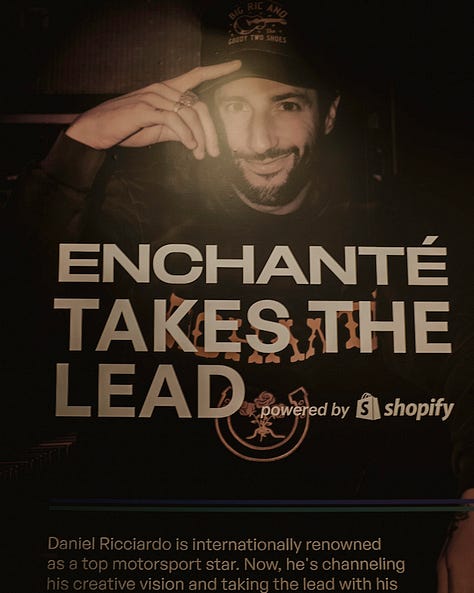

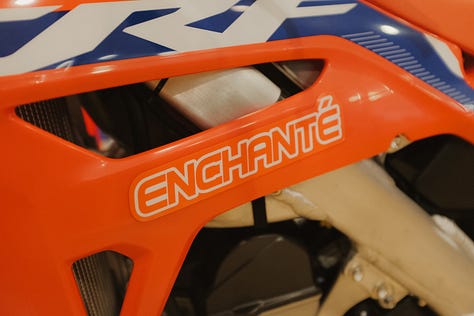


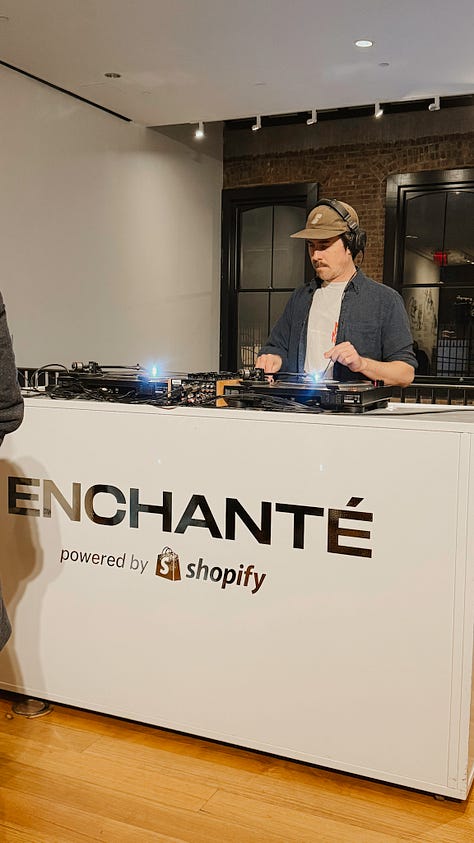

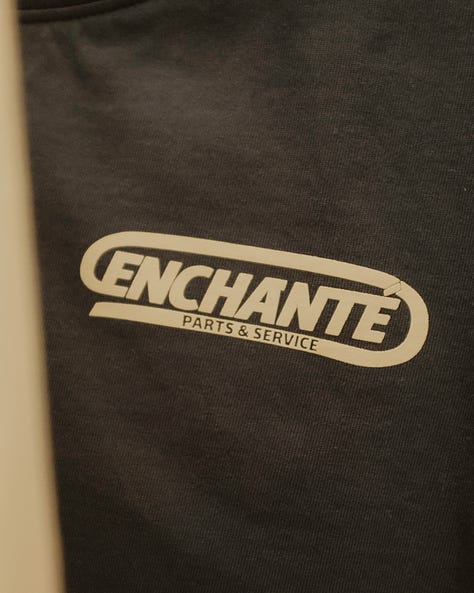
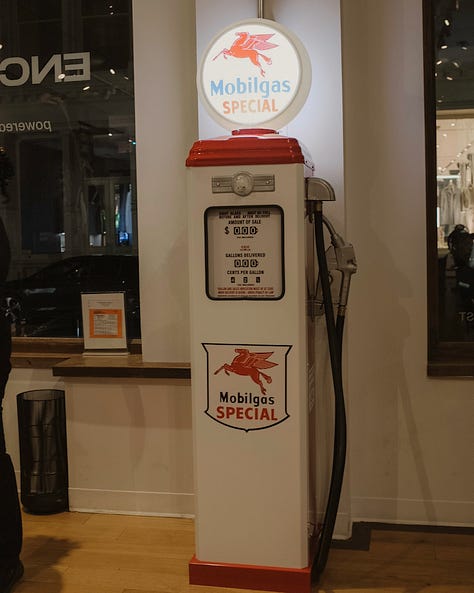
I like what Nirupam Singh said: "The activation also showed why athletes should invest in their stories, creativity, and businesses during their careers. Daniel’s sudden career shift allowed him to refocus on his thriving clothing line."
Daniel's humility is striking. When he told my wife, Amy Landino, that he didn't like the word 'entrepreneur' used to describe him, she laughed and paused, confused a bit.
Daniel explained that he doesn't see himself as an entrepreneur yet because he has to work to "earn it."
I'd say you're well on your way, mate.
Enchantè. Thanks for having me and my wife 🙏🏻
Don’t know what to get the motorsport fan in your life? We’re making it easy. Check out our Holiday Gift Guide


